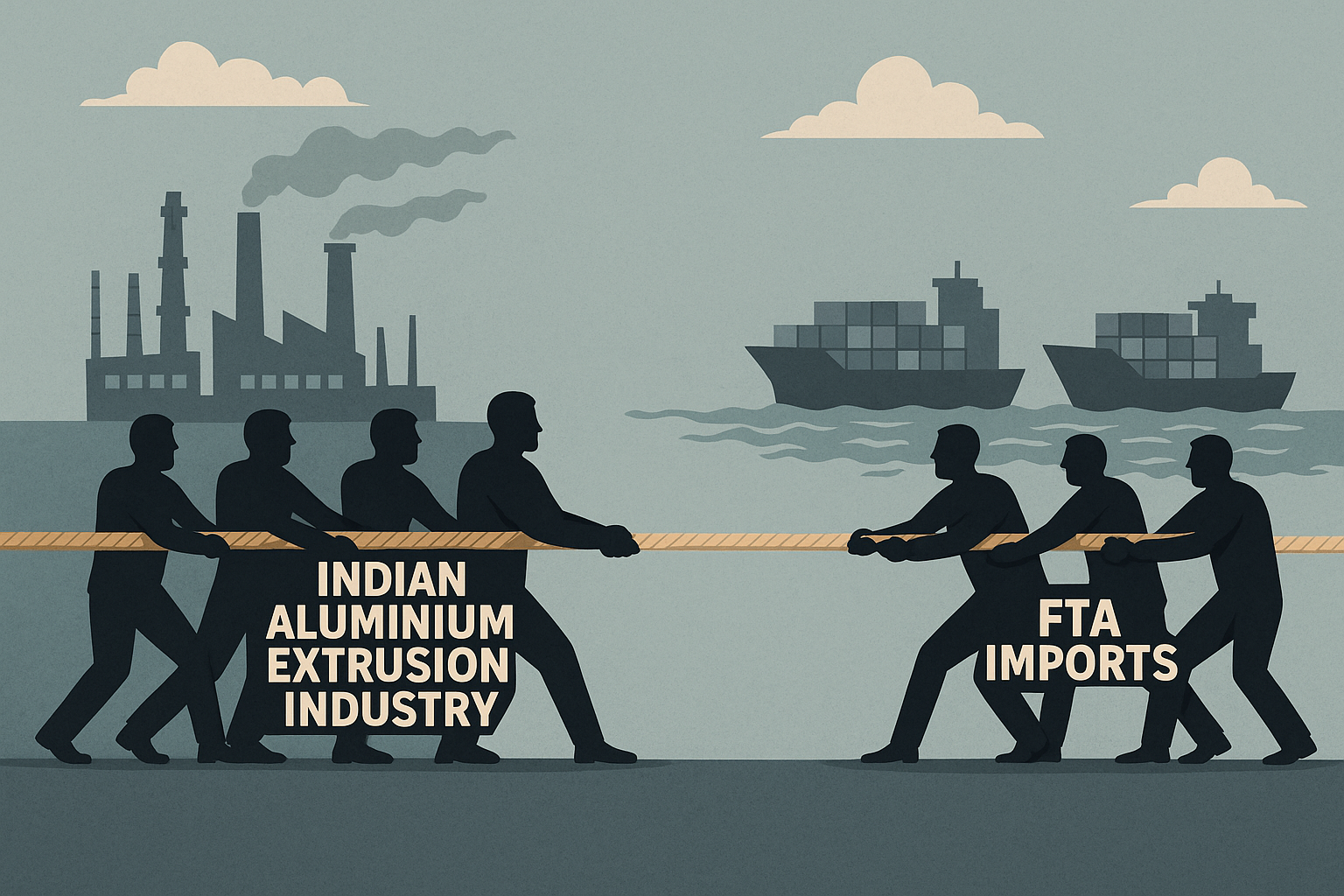

On Thursday, the aluminium extrusion industry called on the government to implement protective measures to support underutilised domestic units from potential overdumping by FTA countries. The industry is struggling to remain viable due to free trade agreements with several Far East countries, which permit duty-free imports and threaten the survival of nearly 500 Indian manufacturers.

The Aluminium Extrusion Manufacturers Association of India (ALEMAI) also urged its members and the broader industry to adopt quality standards and ensure compliance, stressing the need to counter the rising influx of low-cost, substandard imports.
"The total installed production capacity in India is 3.5 million tonnes per annum. However, the aluminium extrusion industry can utilise only around 2 million tonnes. The remaining 1.5 million tonnes is imported. This is primarily because of the price difference and lack of enforcement of standards. By voluntarily implementing BIS certification, we are taking responsibility for raising product quality and reducing our reliance on low-cost imports," ALEMAI President Jitendra Chopra said.
ALEMAI's stance is to impose tariffs to shield domestic extrusion units from cheaper, often lower‑quality imports under FTAs. The proposed protective measure will also aim to:
According to AL Circle's report 'Outlook for the Indian Aluminium Industry', aluminium extrusion usage in India was estimated at 450,000 tonnes in 2021–22 and is projected to grow at a compound annual growth rate (CAGR) of 7 per cent, reaching 630,000 tonnes by 2026–27.
"The sector has raised alarms over the impact of Free Trade Agreements (FTAs) with several Far East countries, which allow duty-free imports and continue to affect the viability of nearly 500 domestic extrusion units. ALEMAI has urged the government to consider safeguards to revive underutilised domestic units," said ALEMAI.
ALEMAI welcomed recent government measures, including the imposition of anti-dumping duties on solar imports from China, Thailand, and Vietnam. The association also emphasised the need for additional policy support, particularly in addressing the shortage of skilled technical workforce in the industry.
"The total installed production capacity in India is 3.5 million tonnes per annum. However, the aluminium extrusion industry can utilise only around 2 million tonnes. The remaining 1.5 million tonnes is imported. This is primarily because of the price difference and lack of enforcement of standards. By voluntarily implementing BIS certification, we are taking responsibility for raising product quality and reducing our reliance on low-cost imports," added ALEMAI.
On one hand, India previously stated how tariffs could affect small-scale exporters, and on the other hand, India is seeking tariff imposition to safeguard its domestic extrusion units – will this decision not affect the country's trade relations with other countries?
Aluminium extrusion – a booming sector
The building and construction sector will remain the leading consumer, followed by the electrical & electronics and transportation sectors. Although the construction sector has experienced a slowdown in recent years, which has negatively impacted extrusion demand, it is poised for significant growth moving forward. The rising preference for high-rise and modern buildings with enhanced aesthetics will continue to fuel the need for premium-quality extrusions. Additionally, new applications such as aluminium-based formwork and scaffolding systems are expected to contribute substantially to demand from this segment.
In the power sector, steady expansion is likely to boost the requirement for extruded aluminium components, including bus bars and related accessories. Meanwhile, the government's strong push for solar energy is expected to accelerate the growth of aluminium extrusion used in solar panel frames and mounting structures. The growing LED lighting industry will also play a key role, driving demand for aluminium heat sinks.
The growing focus on lightweighting in transportation is expected to drive increased demand for aluminium extrusions. Both state governments and private operators are emphasising ride quality, fuel efficiency, and adherence to emission standards—factors that enhance the prospects for aluminium extrusion used in buses. The rising interest in electric vehicles (EVs) is also anticipated to open new avenues for extrusion demand. With the adoption of larger and more advanced extrusion presses, the industry is overcoming previous limitations and is poised for broader expansion.
Responses








